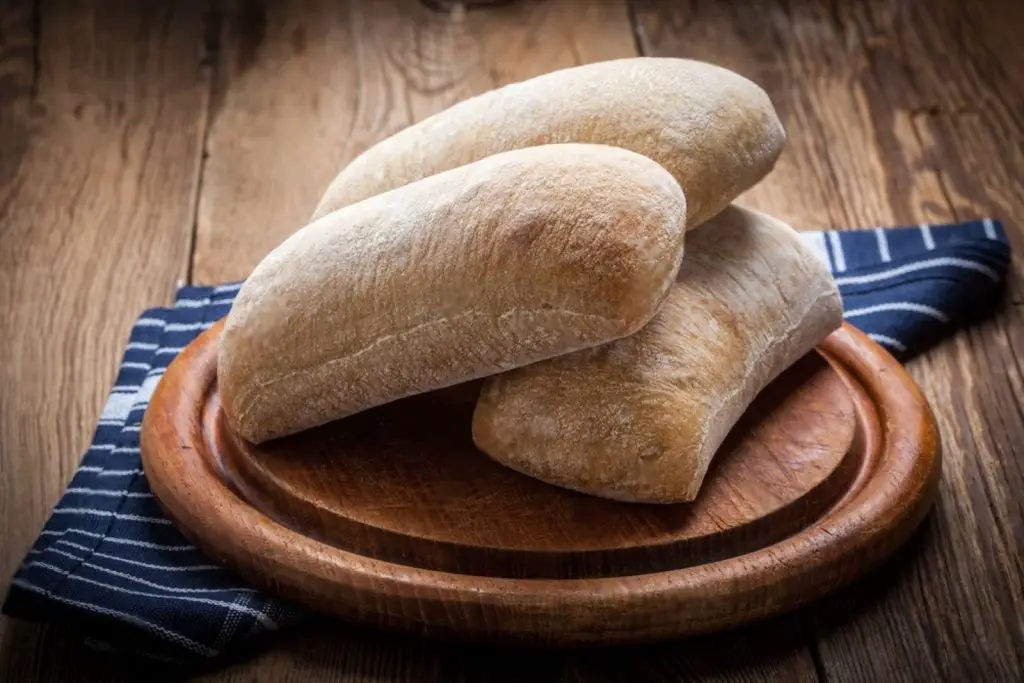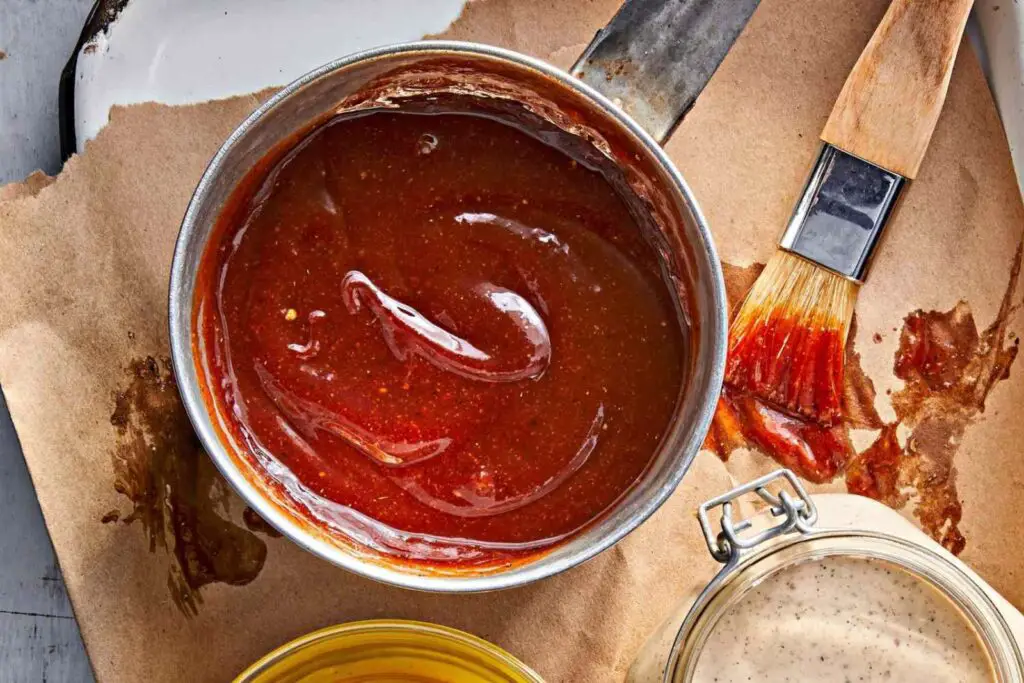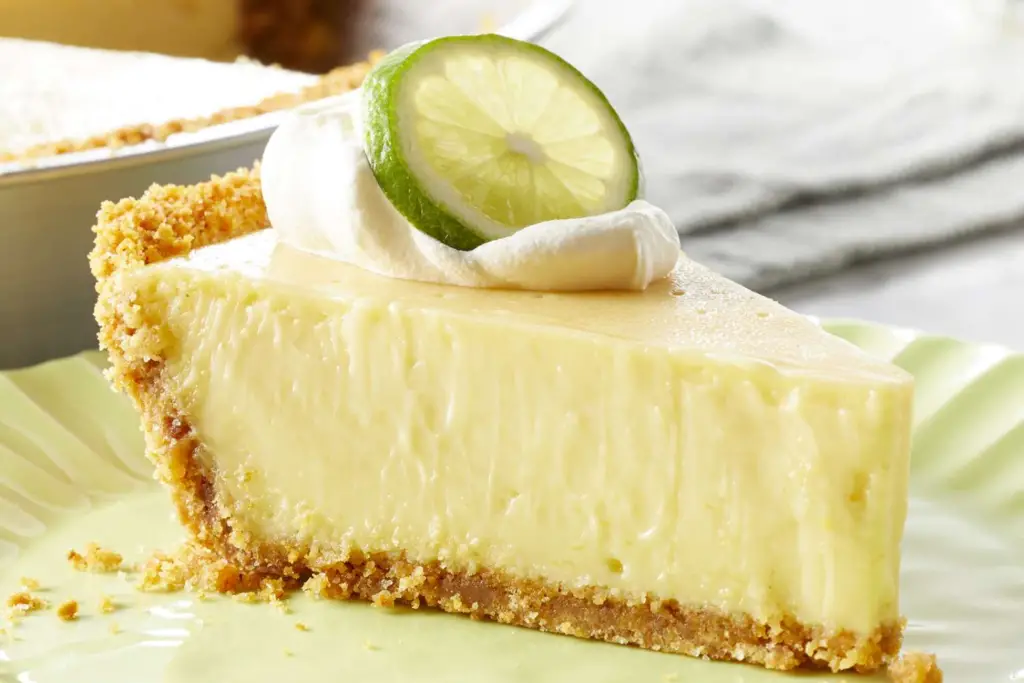
Tacos, with their delightful combination of fillings and toppings, have become a beloved dish enjoyed by many. Whether you’ve made a large batch or have some leftovers from your taco night fiesta, freezing tacos can be a fantastic way to preserve these delectable creations for later enjoyment. By following a few simple steps, you can ensure that your frozen tacos maintain their taste and texture, allowing you to savor the flavors even when taco cravings strike out of season. This article presents a comprehensive guide on freezing tacos while retaining their original deliciousness.
Below is a detailed walkthrough on how to freeze tacos:
Step 1: Prepare your tacos
Tacos, a versatile and beloved dish, offer a range of flavors and options to cater to various taste preferences. Whether you’re opting for classic beef, zesty chicken, savory pork, or a plant-based vegetarian filling, the key to successfully freezing tacos starts with thorough preparation of your ingredients. Properly cooked fillings and well-prepared toppings are essential to ensure that your frozen tacos maintain their taste and texture upon reheating.
Explaining the Importance:
- Cook the Meat: If you’re using meat as your taco filling, ensure that it’s fully cooked before assembling your tacos for freezing. Undercooked meat could lead to potential food safety concerns, and freezing won’t fix this issue. Properly cooked meat not only guarantees safety but also preserves its taste and texture during the freezing process.
- Sauté the Vegetables: Whether you’re adding sautéed peppers and onions or other vegetables to your tacos, it’s crucial to sauté them adequately. Sautéing enhances the flavors, reduces excess moisture, and prevents a soggy texture when you reheat your tacos later. Well-cooked vegetables contribute to the overall quality of the frozen tacos.
- Have Condiments Ready: Part of the joy of tacos comes from the variety of condiments and toppings that can be added to customize each bite. From shredded cheese to sour cream, salsa to guacamole, these condiments add layers of flavor. Having them ready before assembling the tacos ensures that they are evenly distributed, even after freezing and reheating.
- Balancing Flavors: Ensuring that the flavors of your fillings and toppings are well-balanced is essential. This prevents any single ingredient from overpowering the taste after freezing and reheating. Strive for harmony between the different elements to maintain an enjoyable taco experience.
Step 2: Assemble your tacos
With your meticulously prepared fillings and toppings in hand, it’s time to create your flavor-packed tacos. Assembling your tacos is a creative process that allows you to combine textures and tastes for a satisfying culinary experience. However, when it comes to freezing, a bit of foresight is necessary to ensure that your assembled tacos retain their delectable qualities. Let’s delve into the details of this step and understand why certain ingredients, like lettuce and tomatoes, might not be ideal for freezing due to their high water content.
Explaining the Process:
- Layering Fillings and Toppings: Assembling tacos involves arranging your chosen fillings and toppings onto your tortillas. This step allows you to personalize each taco according to your preferences. By layering your ingredients thoughtfully, you ensure that every bite is a harmonious combination of flavors and textures.
- Consider Water Content: While it’s tempting to add all your favorite taco ingredients, it’s essential to consider the water content of certain items. Ingredients like lettuce and tomatoes have a high water content, which can lead to undesirable textural changes when frozen and thawed. Freezing causes ice crystals to form within these watery components, resulting in a limp and soggy texture upon reheating.
- Maintaining Quality: The goal of freezing tacos is to retain the quality and taste of the original dish. To achieve this, it’s advisable to omit ingredients that are prone to textural changes after freezing. While lettuce and tomatoes can still be used, they might be better suited for adding fresh, just before serving, to maintain their crispness and vibrancy.
- Opt for Freezer-Friendly Ingredients: To ensure the best outcome after freezing, opt for ingredients that withstand freezing and reheating well. Cooked meats, sautéed vegetables, beans, and cheese are examples of ingredients that can maintain their flavors and textures through the freezing process.
- Customize with Care: If you’re set on including ingredients like lettuce and tomatoes, consider separating them into a separate container and add them fresh when you’re ready to enjoy your tacos. This way, you get the best of both worlds – the convenience of frozen tacos and the fresh crunch of delicate ingredients.
Should I Freeze Tacos Right After Cooking?
It’s best to cool the tacos slightly before wrapping and freezing. This helps prevent excess moisture buildup and ensures better texture upon reheating.
Step 3: Wrap them up
As you progress through the process of preparing your tacos for freezing, you reach a crucial step that involves wrapping each fully assembled taco individually. This step might seem meticulous, but it plays a significant role in maintaining the quality of your frozen tacos over time. Individually wrapping the tacos in a layer of plastic wrap serves as a protective barrier that prevents freezer burn and safeguards the integrity of the flavors and textures within.
Explaining the Importance:
- Defending Against Freezer Burn: Freezer burn is a common challenge when it comes to freezing food. It occurs when the moisture within the food is drawn to the surface and forms ice crystals. This can lead to dried-out and discolored patches on the food, negatively impacting its taste and texture. By wrapping each taco individually, you create a barrier that helps minimize exposure to cold air and moisture, reducing the risk of freezer burn.
- Maintaining Flavor and Texture: Tacos are a symphony of textures and flavors that come together to create a satisfying eating experience. Wrapping each taco preserves this harmony by preventing moisture loss and the subsequent deterioration of taste and texture. When you’re ready to enjoy your frozen tacos, you want them to be as close to their freshly assembled state as possible, and proper wrapping helps achieve this.
- Preventing Cross-Contamination: Individually wrapping tacos also prevents cross-contamination between different tacos in the same storage container. This is especially important if you’ve prepared a variety of taco fillings and toppings. Individual wrapping keeps the flavors and ingredients distinct and avoids any mingling of tastes.
- Convenient Portioning: Individually wrapped tacos offer the added benefit of convenient portioning. If you plan to thaw and reheat only a few tacos at a time, you can easily retrieve them without having to thaw the entire batch. This minimizes waste and ensures that you can enjoy your frozen tacos whenever you’re in the mood for a delicious meal.
- Easy Labeling: The individual wrapping of each taco makes it simpler to label and date them accurately. This labeling is essential for keeping track of how long each taco has been in the freezer, helping you prioritize consumption based on freshness.
Step 4: Place in a freezer-safe container
With your individually wrapped tacos prepared for freezing, the next crucial step involves selecting an appropriate freezer-safe container to store them. This container serves as a second layer of protection against the harsh conditions of the freezer environment. The choice of container can significantly impact the quality and longevity of your frozen tacos. Let’s delve into the reasons why this step is essential and explore the options available.
Explaining the Importance:
- Shielding Against Freezer Conditions: While the individual plastic wrap provides a primary defense against freezer burn and moisture, placing the wrapped tacos in a freezer-safe container adds an extra layer of protection. This container shields the tacos from exposure to the fluctuating cold air and moisture levels that can occur within a freezer. By minimizing these fluctuations, you help maintain the quality of the tacos during their storage period.
- Preventing Odor and Flavor Transfer: Freezers can sometimes impart unwanted odors and flavors to stored food items. A freezer-safe container acts as a barrier that prevents your frozen tacos from absorbing any undesirable smells or tastes from other items in the freezer. This is particularly important when it comes to preserving the distinct flavors of your tacos.
- Reducing the Risk of Damage: Placing the wrapped tacos in a container helps protect them from potential physical damage. Without proper containment, tacos could get crushed or deformed by other items in the freezer. A container with a tight-fitting lid keeps the tacos intact and maintains their shape.
- Ensuring Easy Retrieval: A well-organized freezer is essential for efficient meal planning. Using a container allows you to neatly stack and arrange the frozen tacos, making it easier to locate and retrieve the desired number of tacos when you’re ready to enjoy them.
- Choosing the Right Container: You have a couple of options for freezer-safe containers. A plastic container with a tight-fitting lid provides sturdy protection against external elements and allows for secure stacking. Alternatively, a heavy-duty freezer bag is a convenient choice, offering flexibility in storage space and easy labeling.
Step 5: Label and date the container
As you prepare to stow away your wrapped tacos in the freezer-safe container, don’t overlook the importance of labeling and dating. This step might seem straightforward, but it holds significant value in terms of organization, quality control, and convenience. By clearly marking the container with essential information, you’re setting yourself up for hassle-free taco enjoyment in the future. Let’s delve into the reasons why this step is vital and how it contributes to your frozen taco experience.
Explaining the Importance:
- Tracking Storage Duration: Labeling and dating the container allow you to keep track of how long your tacos have been in the freezer. This information is crucial for maintaining the quality of the frozen tacos. Over time, frozen food can deteriorate in terms of taste, texture, and overall appeal. By knowing the freezing date, you can prioritize consuming the older tacos first and ensure that none of your delicious creations go to waste.
- Preventing Mystery Meals: Ever opened a container in the freezer, only to be met with the question, “What’s in here?” Labeling eliminates this uncertainty. Knowing exactly what’s inside without having to open the container saves time and avoids any mix-ups.
- Efficient Meal Planning: Planning meals becomes a breeze when you can quickly identify the contents and age of your frozen items. If you’re considering taco night, for instance, you can easily retrieve the right quantity of tacos and plan your side dishes accordingly.
- Preserving Taco Quality: As time passes, even well-frozen food items can start to degrade. By consuming your tacos within a reasonable time frame, you ensure that they retain their optimal taste and texture. Clear labeling helps you stay on top of this aspect and make informed decisions about which tacos to thaw and enjoy.
- Preparing for Special Occasions: Labeled containers give you the flexibility to plan for special occasions. If you’re hosting a taco-themed event or simply craving a specific taco filling, knowing what you have in your freezer simplifies the preparation process.
- Ease of Identification: In a freezer full of containers, a quick glance at the labels helps you find the exact tacos you’re looking for. This avoids the hassle of rummaging through containers to identify what’s inside.
Step 6: Freeze the tacos
Now that your wrapped and labeled tacos are safely nestled in a freezer-safe container, it’s time to introduce them to their icy abode. Freezing your tacos might seem like a straightforward process, but there are specific considerations that play a crucial role in maintaining their quality during storage. From proper placement to temperature consistency, let’s delve into the details of why this step matters and how it contributes to the overall success of your frozen taco endeavor.
Explaining the Importance:
- Protecting Taco Integrity: Placing the labeled container in the freezer is the gateway to preserving your meticulously prepared tacos for future enjoyment. However, proper placement is essential to prevent the tacos from being crushed, flattened, or otherwise compromised during freezing. Taco components, like the tortillas and fillings, should retain their individual shapes and textures.
- Ensuring Even Freezing: The way your container is positioned within the freezer can impact the freezing process. Placing it near the back of the freezer is recommended because this area tends to have a more consistent and stable temperature. This consistency minimizes temperature fluctuations that can lead to the formation of large ice crystals, which might affect the texture of your tacos upon thawing.
- Minimizing Temperature Fluctuations: The back of the freezer is typically less susceptible to temperature changes caused by frequent door openings. Placing your container here ensures that your tacos freeze at a steady rate, which contributes to maintaining their taste and texture.
- Organized Storage: Placing the labeled container at the back of the freezer also helps you keep your freezer organized. Since frozen tacos are generally prepared for consumption over a span of time, storing them in a designated location makes them easy to locate and retrieve when you’re ready to enjoy them.
- Preventing Cross-Contamination: Positioning the container away from the front of the freezer, where frequent access occurs, reduces the risk of cross-contamination. This is especially important if you have other items in your freezer that might have strong odors or flavors.
- Protecting Against Pressure: Placing the container in a way that prevents it from being crushed by heavier items is important to maintain the shape of your tacos. While the tacos are individually wrapped, maintaining their original form contributes to a better eating experience after reheating.
How long can tacos last in the freezer?
Tacos can last in the freezer for about 2 to 3 months. After this period, their quality may begin to deteriorate in terms of flavor and texture. Proper packaging and storage conditions are crucial for maintaining their optimal taste and enjoyment.
Step 7: Thaw and reheat
The moment has arrived – you’re ready to relish the flavors of your frozen tacos. As you transition from freezer to plate, the process of thawing and reheating plays a pivotal role in bringing your culinary creations back to life. This step might require a touch of patience, but it’s well worth the effort for the satisfying taco experience that awaits. Let’s explore the intricacies of thawing and reheating, and understand why these steps are essential to enjoying your frozen tacos to the fullest.
Explaining the Process:
- Thawing in the Refrigerator: The first step in enjoying your frozen tacos is to gently bring them back to their original state. Thawing in the refrigerator is the preferred method, as it allows for slow and controlled defrosting. Placing the container in the refrigerator ensures that the tacos thaw evenly, minimizing the risk of texture changes and moisture loss. It’s advisable to plan ahead and allow sufficient time for thorough thawing.
- Restoring Crispness and Flavor: While thawed tacos might retain their core flavors, they might lose some of the crispness that characterizes a freshly made taco. To restore that satisfying crunch, reheating is necessary. Reheating also enhances the overall eating experience by warming up the fillings and toppings and intensifying the flavors.
- Oven or Stovetop Skillet: When it comes to reheating, two popular methods are using an oven or a stovetop skillet. In the oven, placing the tacos on a baking sheet at a low temperature (around 350°F or 175°C) allows them to gradually heat through without burning. Similarly, using a stovetop skillet over medium heat offers direct contact and results in a nicely heated tortilla with warm fillings.
- Monitoring the Process: Whether you opt for the oven or stovetop method, it’s essential to monitor the reheating process closely. You want to achieve the perfect balance between restoring crispness and avoiding overcooking, which can lead to dry or tough textures.
- Avoiding Microwave Reheating: While microwave reheating might be convenient, it can lead to uneven heating and a soggy texture. The microwave tends to zap moisture from foods, potentially affecting the quality of your tacos.
Other related questions
Can I refreeze tacos?
Refreezing tacos is generally not recommended. Once tacos are thawed, bacteria can multiply, affecting safety and quality. It’s best to consume thawed tacos promptly and avoid refreezing to preserve taste and minimize health risks.
How do I know if the tacos have gone bad after being frozen?
Signs of frozen taco spoilage include odors, freezer burn, changes in texture, and loss of flavor. Ice crystals, sogginess, or an unappetizing appearance suggest deterioration. Use sensory evaluation and discard if quality is compromised.
Can I Freeze Different Types of Tacos Together?
It’s possible, but separating different types of tacos in individual wraps prevents flavor mixing. This way, you can enjoy distinct flavors upon reheating.
Can I Freeze Tacos with Sour Cream and Guacamole?
It’s advisable to skip freezing ingredients like sour cream and guacamole due to their texture changes. Add them fresh when serving for optimal taste and consistency.
Can I Freeze Tacos with Salsa?
Yes, salsa can be frozen, but its texture may change upon thawing due to water content. Consider freezing salsa separately and adding it fresh after reheating for best taste and consistency. This ensures your tacos maintain their delicious flavors.








